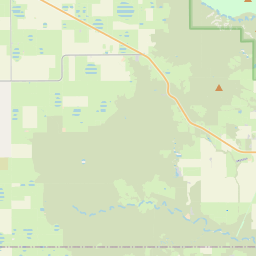Resthaven Cemetery
Historical marker location:






The burial ground has served Quitaque since the 1920s. Quitaque’s name may have come from Quitica Indians who came through this area on a 1683-84 expedition with Juan Mendoza and Juan Sabeata; it may mean “the land at the end of the trail.” In 1865, José Piedad Tafoya opened a trading post in the area. He was followed in 1877 by George Baker, who established the Lazy F Ranch, which he later sold to noted rancher Charles Goodnight. A decade later, Quitaque became a stage stop. In 1890, a general store opened and the next year, a post office was moved from the ranch to the store as residents began to settle in the newly platted town. By 1903, a Methodist church organized. The congregation’s building, constructed in 1908, also served other denominations.
Residents used other area graveyards to bury the deceased until 1922, when brothers Alvin and Edgar Howard donated ten acres for cemetery use. The first person interred in Resthaven Cemetery was Katie Daniel (d. 1922). Others interred here include Amos Persons, who organized First National Bank and was influential in bringing the Ft. Worth and Denver Railroad to Quitaque, and community leaders Orlin and O.R. Stark, father and son, who followed Persons as presidents of the bank and were civic leaders. A sandstone wall with spaced pilasters built from 1938-40 by the Work Projects Administration (WPA) surrounds the property. Other features include grave slabs, curbing and religion iconography. Today, Resthaven Cemetery remains a record of early pioneers whose hard work and determination set the foundation for the Quitaque community
As one of the most visible programs of the Texas Historical Commission (THC), historical markers commemorate diverse topics in Texas history, including: the history and architecture of houses, commercial and public buildings, religious congregations, and military sites; events that changed the course of local and state history; and individuals who have made lasting contributions to the state, community organizations, and businesses.
The world's first rodeo was held in Pecos, Texas in 1883. The event included bronco riding, calf roping, and bull riding.
During the late 19th and early 20th centuries, Briscoe County experienced a boom in cattle ranching. The arrival of the railroad in the area in the 1880s further facilitated the growth of the industry, leading to an increase in population and economic prosperity. Ranchers from all over the state flocked to Briscoe County, establishing large cattle ranches and contributing to the region's reputation as a major center of the Texas cattle industry.
The county also played a significant role in the development of the oil and gas industry in Texas. In the early 20th century, oil was discovered in Briscoe County, leading to the establishment of oil wells and the subsequent growth of towns such as Silverton. The oil boom brought new economic opportunities to the area and attracted a diverse population, including workers from other parts of Texas and beyond.
Today, Briscoe County continues to be an important agricultural center, with cattle ranching, farming, and oil and gas production as its primary industries. Its rich history, shaped by the contributions of Native Americans, cattle ranchers, and oilmen, has left a lasting legacy. The county's natural beauty, including its canyons and wide open spaces, attracts visitors who come to enjoy outdoor activities such as hiking, fishing, and birdwatching.
Briscoe County Timeline
This timeline provides a glimpse into the major events and milestones that have shaped the history of Briscoe County, Texas.
- 1860 - Briscoe County is established by the Texas legislature.
- 1892 - Silverton becomes the county seat of Briscoe County.
- 1902 - The Briscoe County News begins publication.
- 1926 - The Texas Technological College Stock Farm is established in Briscoe County.
- 1930 - Briscoe County experiences a decline in population due to the Dust Bowl.
- 1960s - Oil and gas production becomes an important industry in Briscoe County.
- 1980s - Briscoe County becomes known for its beef cattle industry.
- 2000s - Wind energy development begins in Briscoe County.